19 years ago, Hong and I began our relationship on a series of overnight trains in China. Packing 60 people to a car in rows of triple bunk beds with linen last washed in the 20th century, peeing down to the track through a slippery squatty potty, and making instant noodles from a gigantic cauldron of boiling water aboard the moving locomotive were not exactly pleasant at the time, but made fantastic memories that few other trips ever measured up to. Finding our soulmates in each other was a life-defining bonus, too. So when we learned that it was possible to travel from Bangkok to Chiang Mai via a sleeper train, we both knew that it had to go on the bucket list.
Booking
Just about everywhere I looked on the English-language Internet, travel blogs and how-to guides made it sound like I had to book these train tickets using a travel agency called 12 Go Asia. While I didn’t mind a travel agency making a few bucks to help me with a seamless experience, it felt fishy that none of these sites mentioned alternatives. For traveling in China, as an example, buying train tickets directly from the state required cash or a Chinese bank account, so travel agencies absolutely make sense for foreigners who need to book in advance. On the other hand, I had a better experience with Spain’s official Renfe website than either of the travel agencies that travel blogs promoted. As such, I went on a mission to find out how I could purchase a Thai train ticket without going through a third party.
Fortunately, I came across one journal article whose author briefly mentioned purchasing her train trip directly from the train operator, the State Railway of Thailand. Even when directly Googling its name, the official website was buried deep in the search results. From there, the long load time and the Thai language interface were both intimidating. After some poking around, I learned some key pros and cons between the official website and the travel agency.
- Functional design: 12 Go Asia was intuitive, fast, and bug-free. The official website required a bit of local knowledge such as realizing the train station to be “Krung Thep Aphiwat” rather than “Bangkok”. Even on the English language interface, a third of words on the official website remained in Thai so I struggled to read the resulting error message when I chose a ladies-only car by mistake. The travel agency wins this one
- Timing: the railway company released schedule for booking 30 days in advance, so that’s all the official website made available. In contrast, the travel agency was happy to take our reservation and money a full year in advance, which might be the only option if we wanted to gun for multiple first class seats on a popular route. However, what gave me pause was that the agency could not guarantee booking, presumably until actual schedule had been released, so it was unclear if there was any advantage to paying early. I’d call this one a tie
- Cost: as we’re talking about spending money in a fairly affordable region, the difference here wouldn’t break anyone’s travel budget. That said, for second class seats between Bangkok and Chiang Rai, the travel agency’s surcharge was almost 50% of the ticket price. The official website wins here by default
- Options: Because the official website let us book directly into the actual reservation system, it had options for special cars (ladies only, for example) and specific seats (similar to airlines’ seat selector, but it also showed the gender of each existing occupant). I had a strong preference for the kids to be on bunks above us and not across from a stranger, and the travel agency did not provide any seat assignment guarantees, so it was kind of a no-go
- Ticket logistics: customers of 12 Go Asia must pick up physical tickets from the agency’s office, which was in a separate building near the old train station or in the corner within the new train station. This would’ve added considerable overhead during the vacation, and I thought it was far inferior to the official website which sent electronic tickets that could be printed out at home
After thorough consideration of the tradeoffs, I decided to book with the official website and marked my calendar to do so as soon as the 30-day window opened. With some trial and error, I found that the schedule for a new day went live around 8am Thailand time (6pm PDT), but available dates in the drop-down box was determined by the user’s computer system date. Thus I was able to purchase our 7/20 tickets at dinner time on 6/19 when I changed the date on my computer forward; without this trick I’d have to wait until the next morning.
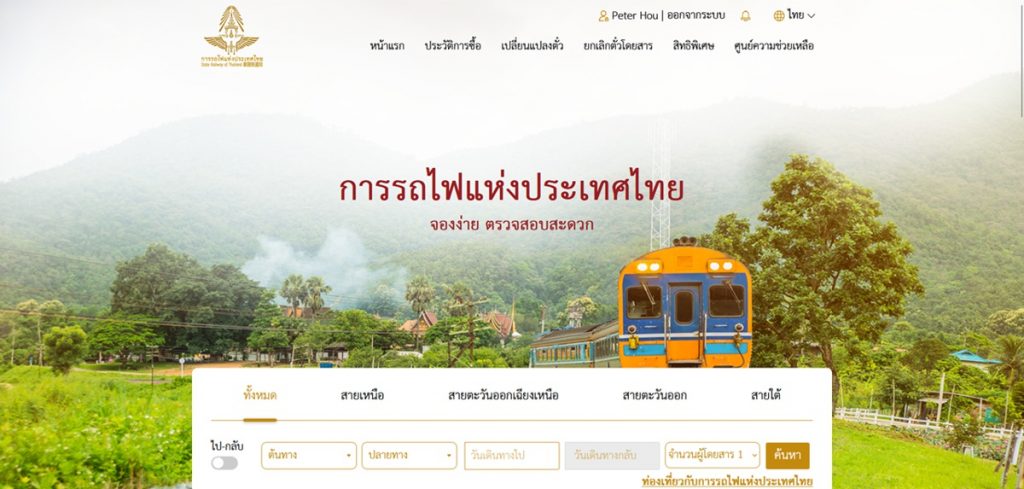
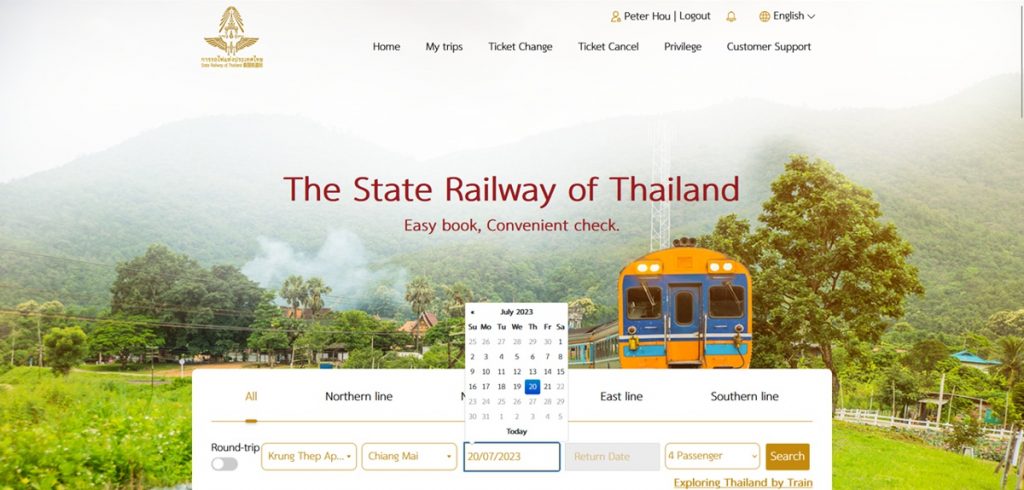
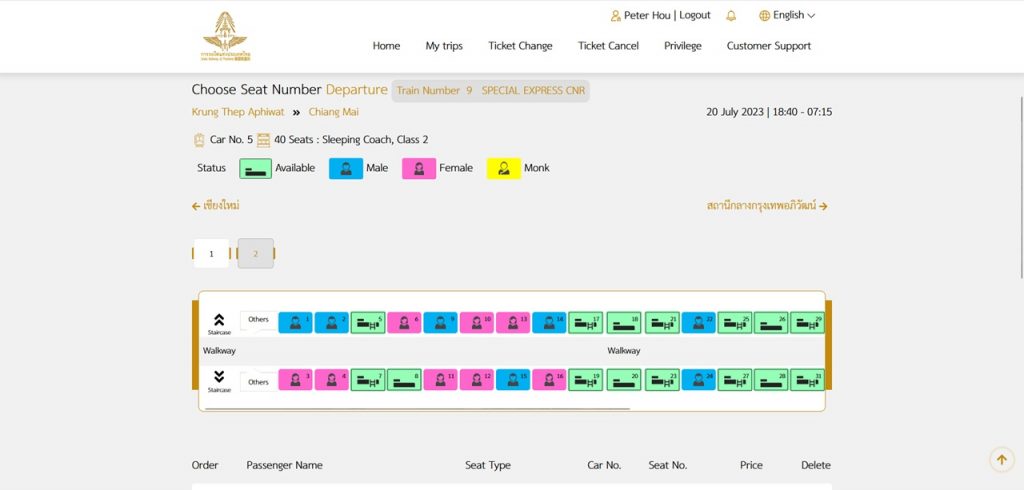
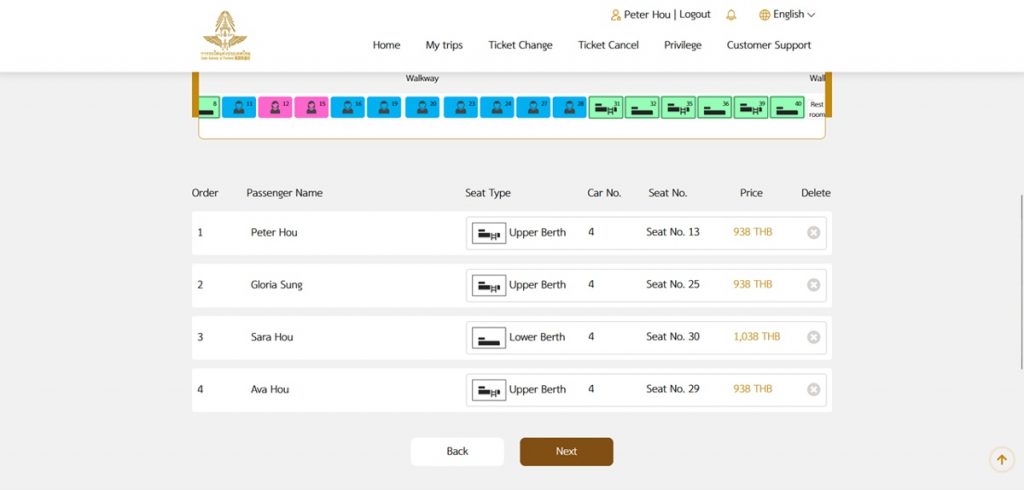
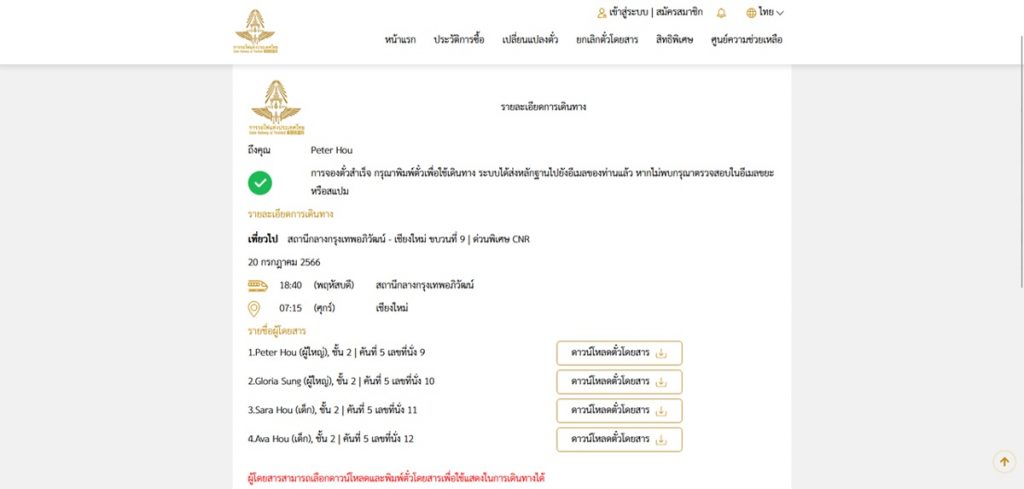
Catching the Train
Krung Thep Aphiwat was 5.4 miles north of our hotel, which a car could reach within 15 minutes without traffic. For our 6:40pm train, we planned to leave the hotel at 5, to budget a whole hour for rush hour traffic and 40 minutes of buffer at the train station. It seemed like a generous margin with a 99% confidence interval of stress-free arrival.
Then it rained that afternoon. A small thunderstorm. I’m not sure how much it necessarily worsened traffic, but it most certainly did not help. Then there was a bizarre behavior of traffic lights at the Erawan intersection in Siam Square, where the signal for northbound traffic remained green for just 20 seconds within a 20-minute window. ETA on the Grab app permanently said 45 minutes while our ride remained right in front of the hotel for almost that much time. Our anxiety grew as the driver’s patience wore thin. When we finally asked, he didn’t think we’d get there in time in this traffic (the app was still somewhat optimistic) and suggested that we took public transit instead.
Great.
I knew how, because I did the homework. I also ruled the option out definitively because I didn’t think anyone would appreciate dragging heavy suitcases through BTS, then MRT, going up and down and up a bunch of stairs during evening rush hour. In a thunderstorm nonetheless. The driver seemed eager to kick us out when he painted a rosy picture of how quickly the trains could take us there, but I knew it’d be at least twice as long. We got out of the car anyway, about 45 minutes before departure. Leading the family toward the BTS station right by the hotel, my heart sank without much hope.
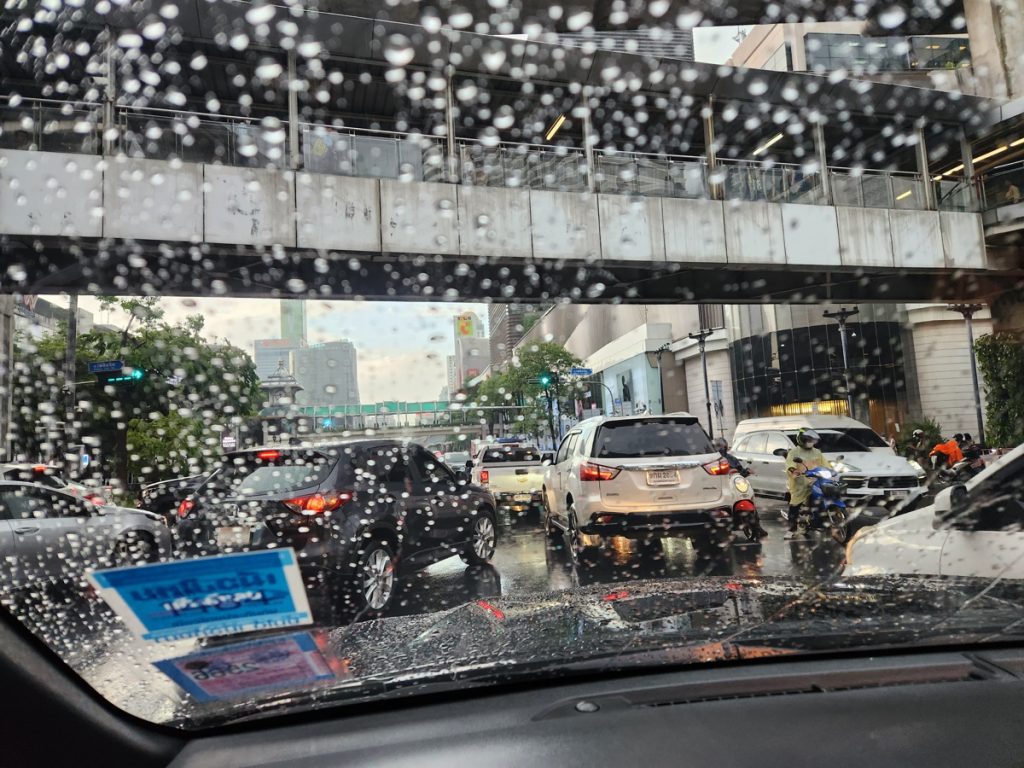
That airport scene in Home Alone is funny if you aren’t part of it. Dashing up two flights of stairs with three suitcases and four backpacks was a Crossfit-level workout, but it wasn’t as difficult as dodging the sea of students and office commuters everywhere. I may have cut in line at a ticket counter, probably made some rude maneuvers, and definitely did not enjoy forcing our way onto fully packed BTS and MRT trains. We were lucky to have a train waiting on each platform when we arrived, and there was no delay whatsoever, but the time taken to traverse the stations was dangerously close to our few remaining minutes.
Our girls were fully functional partners on this mission. While not yet strong enough to carry the heavy stuff, they were helpful extra pair of hands at handling the ticket machines and dragging the suitcases. They also had the stamina to sprint up stairs and down hallways, and I was quite proud of them for being able to keep up with my speed at peak anxiety.
Finally, we reached Krung Thep Aphiwat at 6:35, a full 5 minutes before scheduled departure. We even made the correct turn by luck into the lobby, and ran into helpful staff who pointed us in the right direction. We breathed a temporary sigh of relief when the officers checked our tickets and reassured us that we had made it… all we had left to do was to go upstairs, find our train, and board car #5. Oh but guess what? When we reached the second floor, we found ourselves 200 feet behind the tail of the train, which was car #13. Mad dash continued, and I ran out of steam a couple times within this otherwise short distance. When we finally got to car #6, a conductor signaled for us to board there and walk forward inside the train. My goodness! It was 6:38, and the train started moving shortly after we sat down. Looking back, this mad trip could have easily taken 5-10 more minutes and we’d be crying in the train station instead. I was physically more exhausted than after that half marathon, and nearly broke my flip flops during this dash. But I was extremely grateful for having made it.

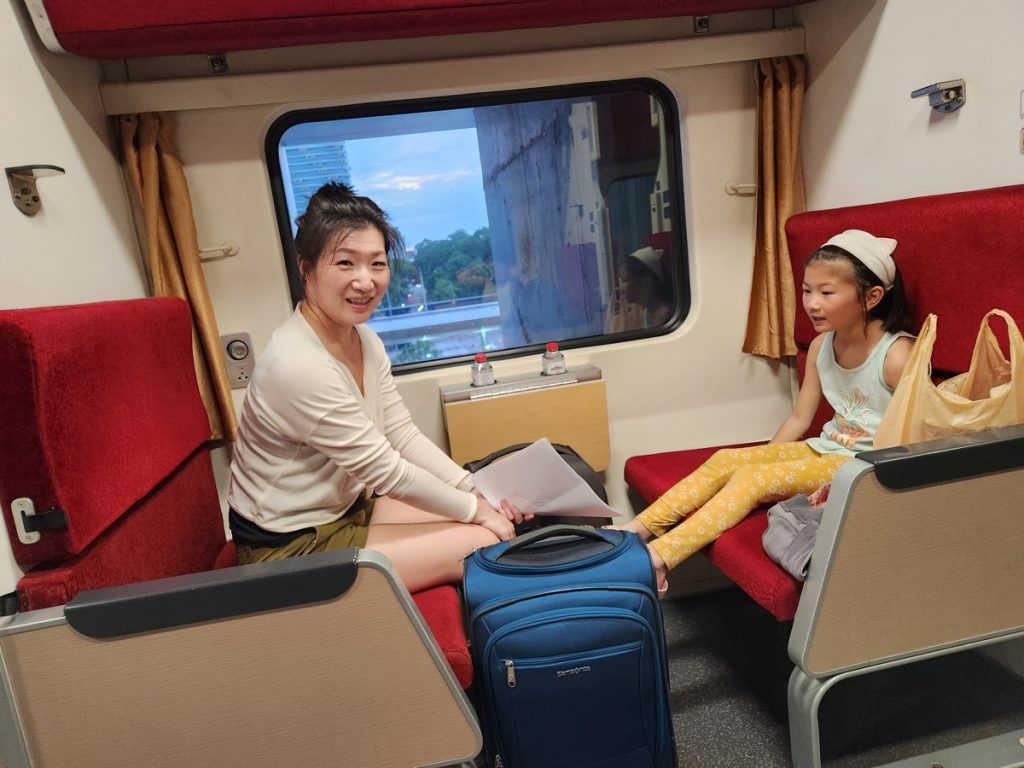
The Ride
We booked train #9, reportedly the newest and most comfortable option from Bangkok to Chiang Mai with its distinctive red seats. This “special express” took 12 hours and 35 minutes to traverse this 700-kilometer route, averaging less than 35 miles per hour.
In second class, each train car accommodated 40 passengers in two rows of 10 upper bunks and 10 lower bunks. For the first couple and the last hour of the ride, the upper bunk was folded up and the lower bunk was arranged as two seats facing each other. Each pair of seats shared a small table that was stocked with two bottles of water.
The train was less than half full at departure, which puzzled me because competition for tickets seemed fierce at time of booking. Then it made several stops and picked up more passengers. Before I knew it, there were hardly any empty bunks left.
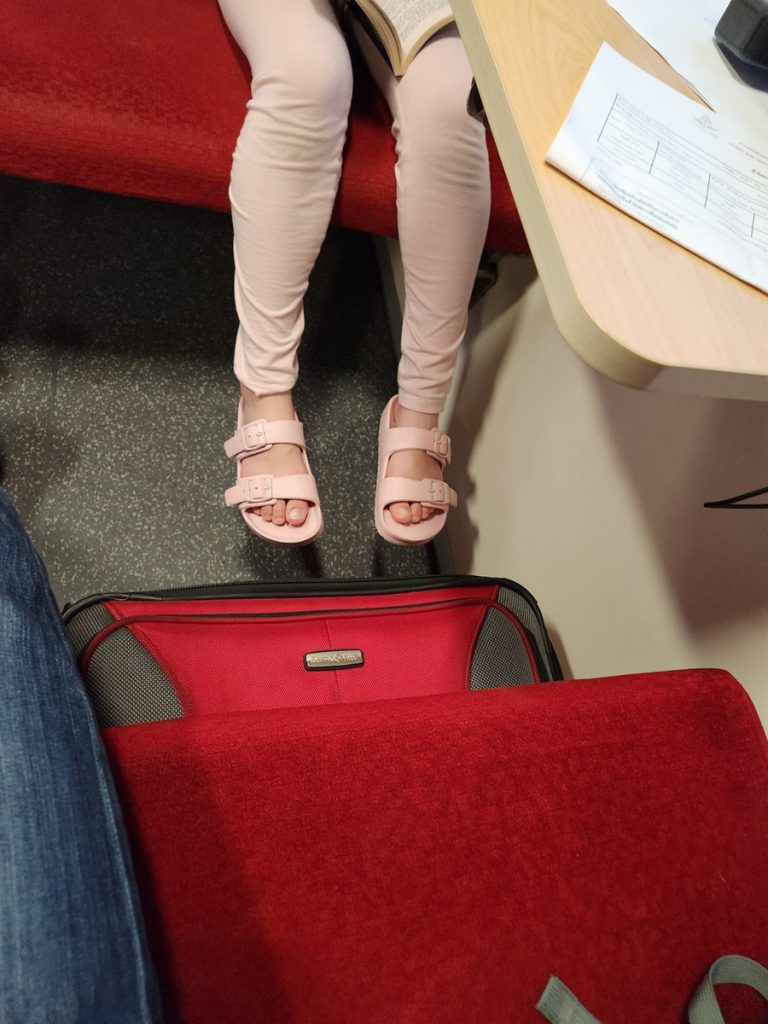
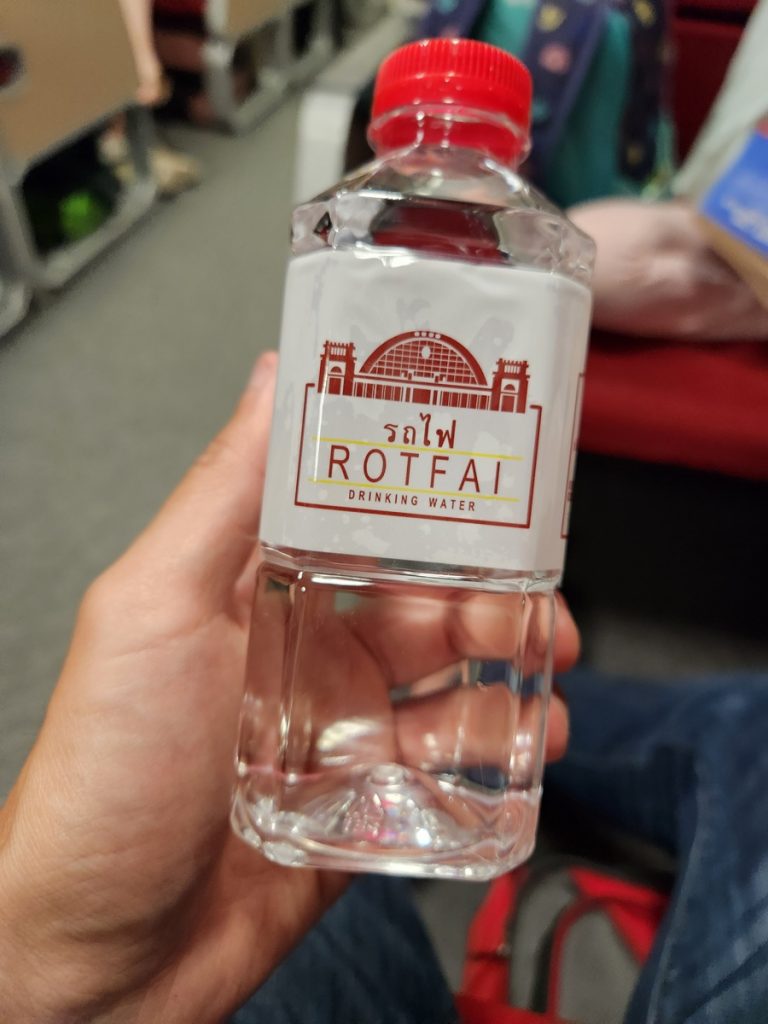
Before we were able to cool down, a lovely old lady came to take our meal order. As soon as we scrambled to place our dinner order, she wanted to know our morning beverages of choice. Two lattes and two hot chocolates, then. We weren’t charged until the train almost reached Chiang Mai. The exact numbers were a blur but I recall dinner being rather cheap and coffee being on the pricey side.
The food was delivered an hour into the journey. Each person got box set with rice, egg, fruit, spring rolls, an entree of choice, a bowl of hot soup, and a brownie. What a feast! We had eaten on an overnight train exactly once before: on the Beijing-to-Xian route. The food was so unbearably salty that we just stuck with instant noodles for the rest of that 2004 trip. In the 19 years since, I continued to assume that all train food was to be avoided. If our trip to the train station wasn’t such a disaster, the original plan was to buy food in or around the train station to bring onboard, too. But hey, what the old lady brought us wasn’t half bad! It wasn’t at Yaowarat’s level but everything was quite tasty and served at the right temperature. I genuinely enjoyed my meal, and finished Xuan’s leftover, too.
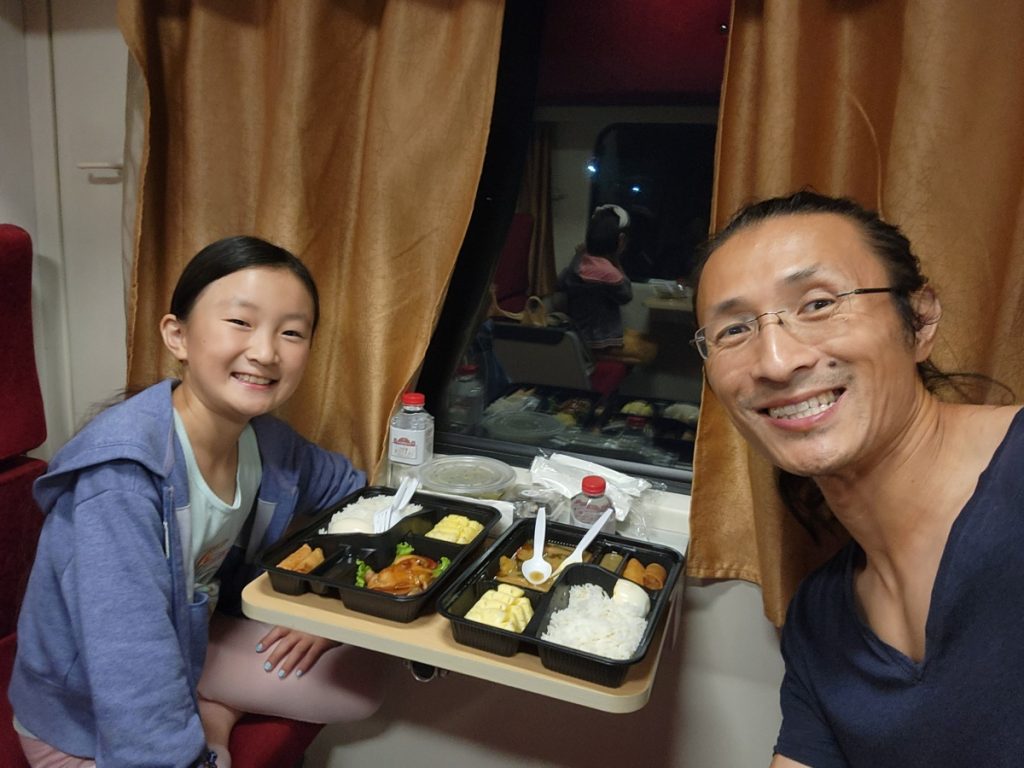
40 minutes after the dinner service (about 8:20pm), stewards on the train started offering to convert people’s seats into beds. These were easily convertible – but still heavy – furniture. The speed at which these dudes flipped the bunks around and spread out bedding was incredible.
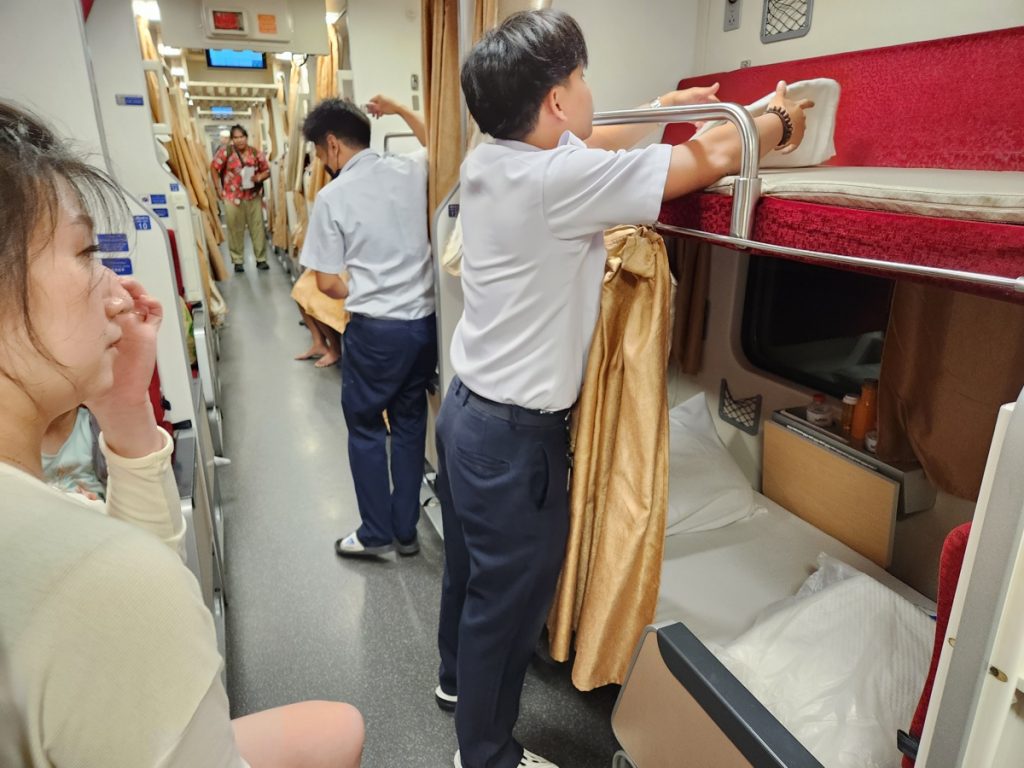
Whenever we talked about the 2004 train trip, the best stories always had to do with the bathrooms… and not in a pleasant way. Being on this train in Thailand definitely reminded us of the good old days. Standards were much higher here, but how much can you expect from a public toilet aboard a moving locomotive? I brought a few disposable toothbrushes from the hotel for this exact moment. The rest of my family skipped brushing teeth altogether.
By 9pm, most people were in their bunks with curtains drawn.
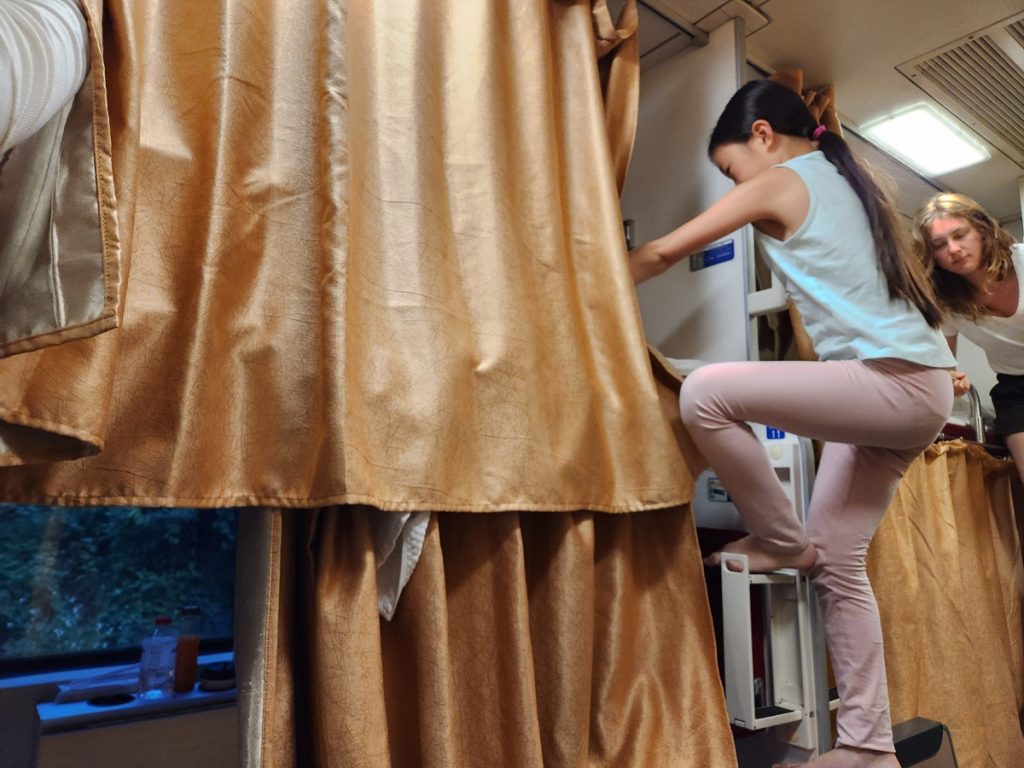
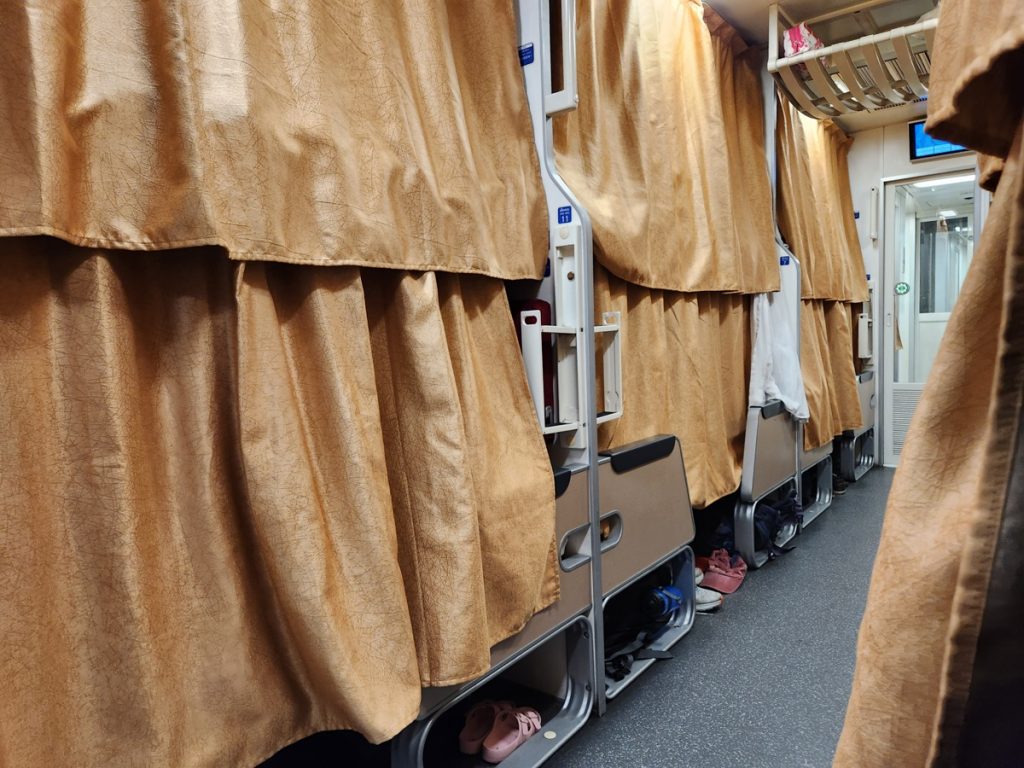
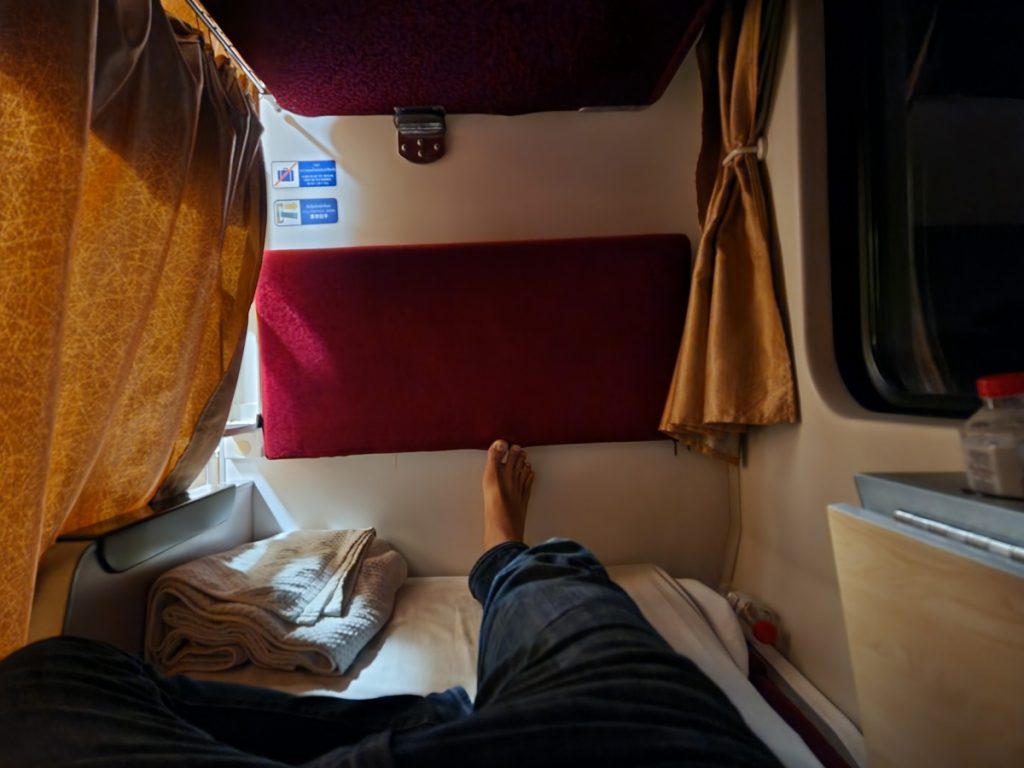
I woke up naturally around 5, half an hour before sunrise. I would say some bloggers out there overly exaggerated the “beauty of sunrise over the northern Thai jungle”, but it was nice to just sit there for a couple hours staring at the vast rural landscape and allowing the mind to relax.
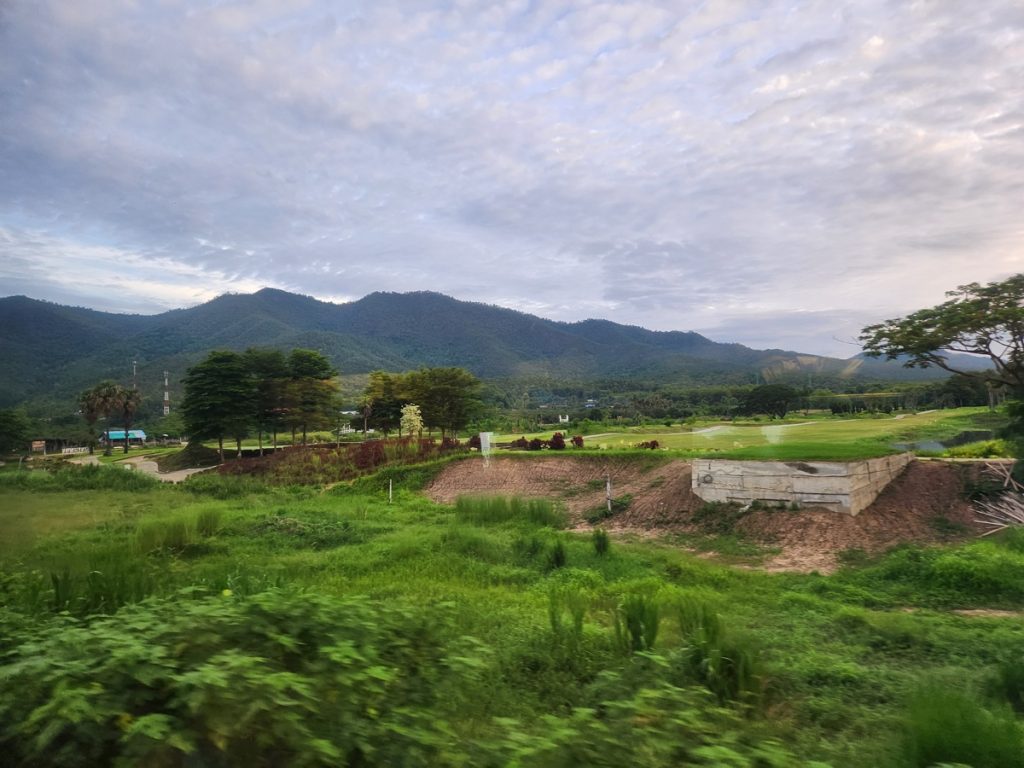
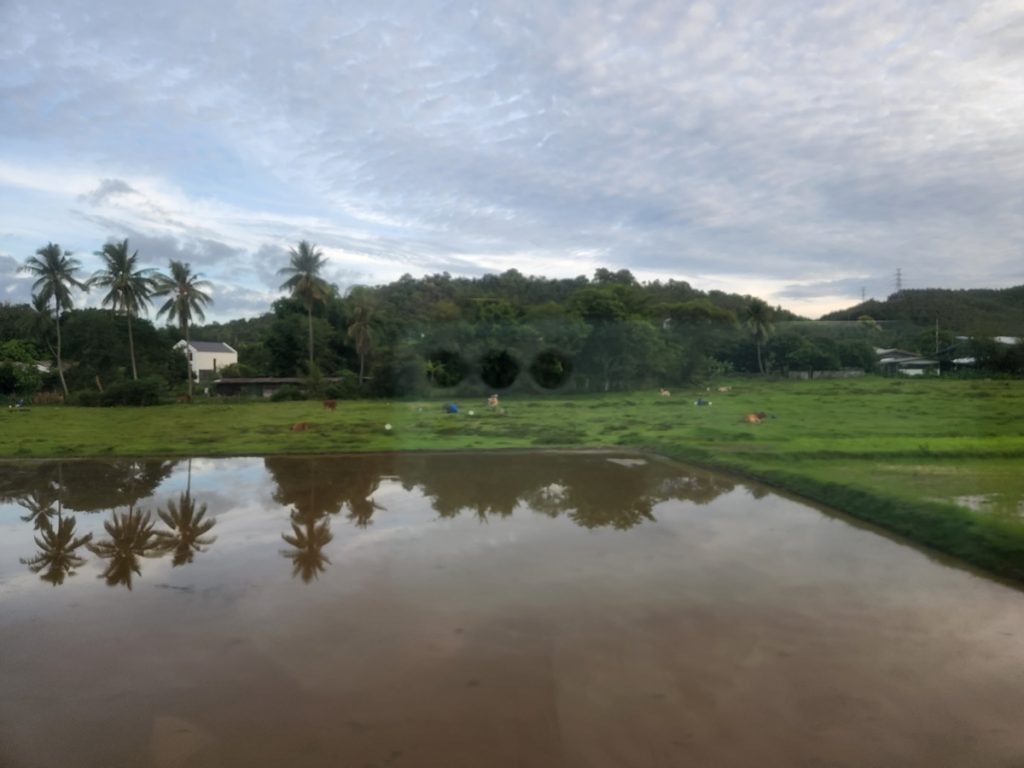
Our hot latte and hot chocolate arrived just before 6am. It once again exceeded expectations, and put office coffee machines everywhere to shame.
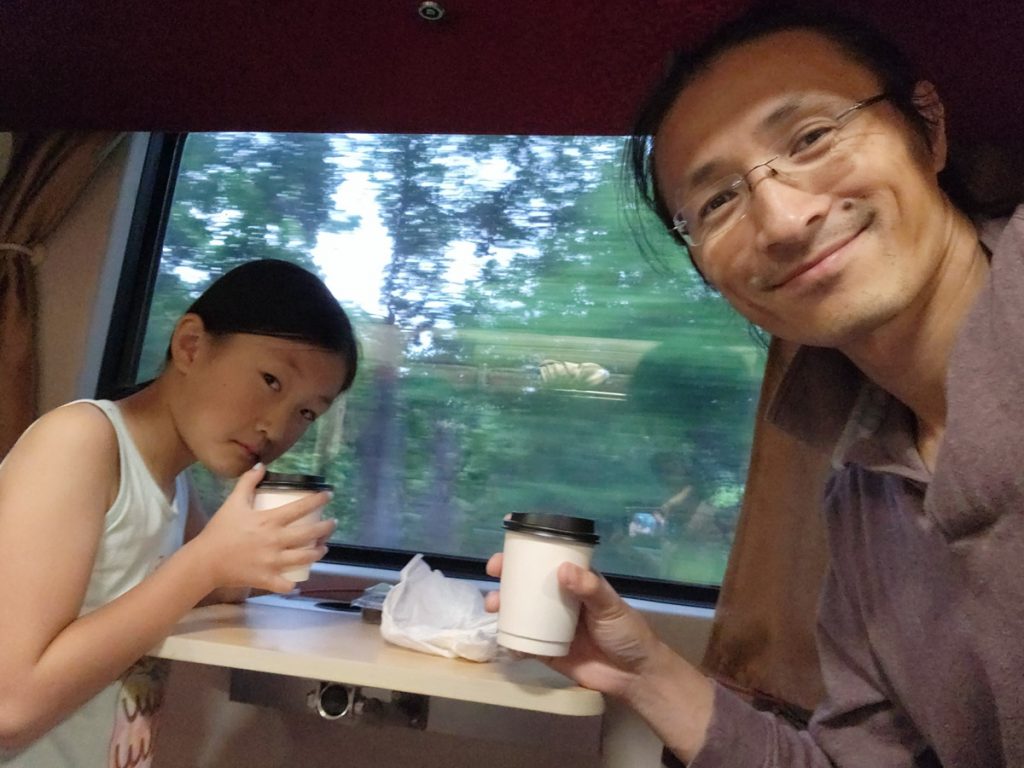
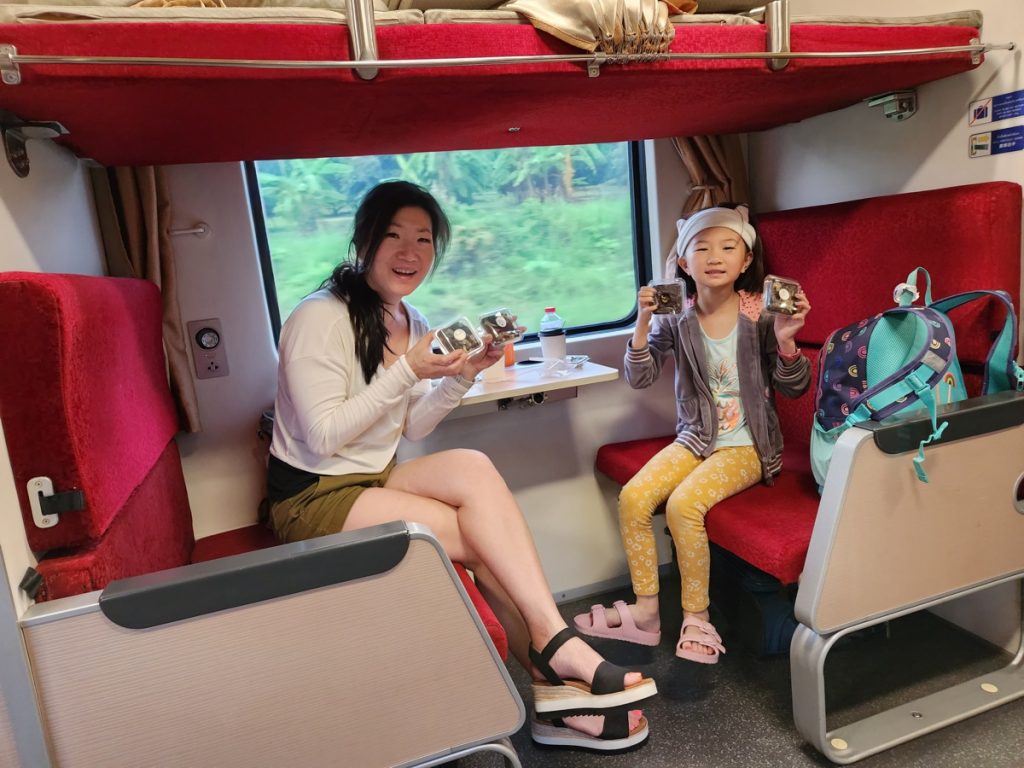
The train reached Chiang Mai a couple minutes ahead of the 7:15am scheduled arrival. A new day thus began in a new city!
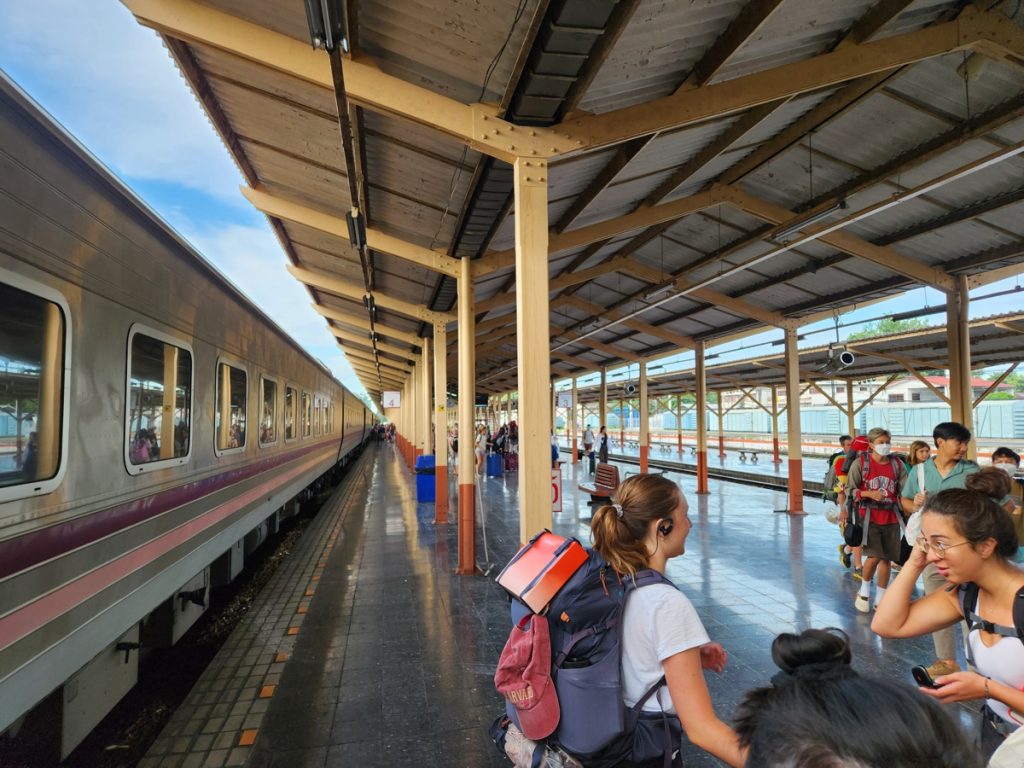
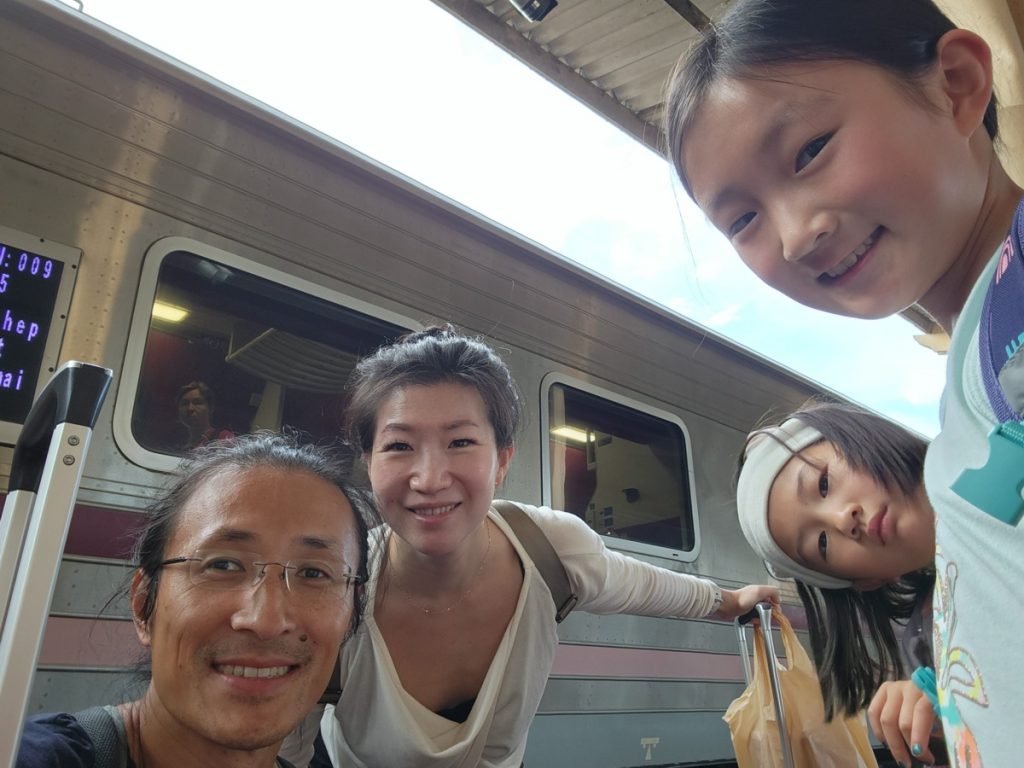
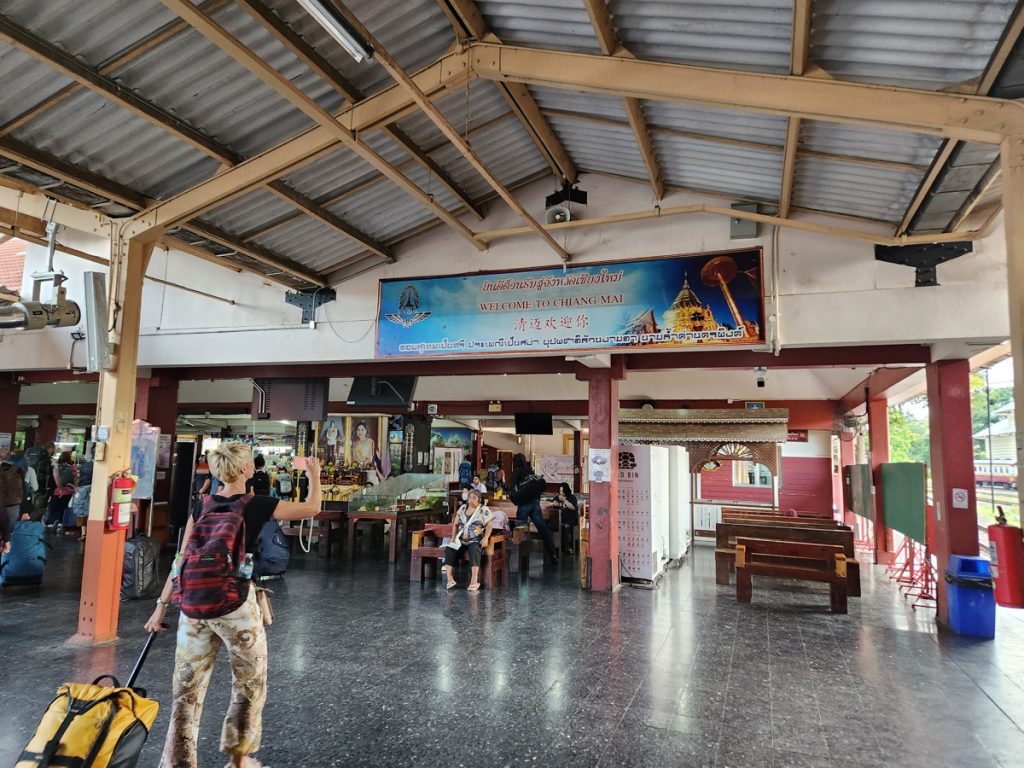
Southeast Asia 2023 – Index
- Kicking Off 15 Intensely Fun Days in Thailand and Singapore
- Attempting the Thai Language
- Modes of Transportation
- Bangkok: Grand Hyatt Erawan
- Bangkok: Itinerary 1
- Bangkok: Itinerary 2
- Bangkok: Malls
- Overnight Train to Chiang Mai
- Chiang Mai: Itinerary
- Chiang Mai: Elephants!!!
- Chiang Rai: Itinerary
- Wats in Thailand
- Notable Eats in Thailand
- Singapore: Itinerary
- Singapore: Deja Vu
- Singapore: Changi Airport & Flight Home
- Notable Eats in Singapore
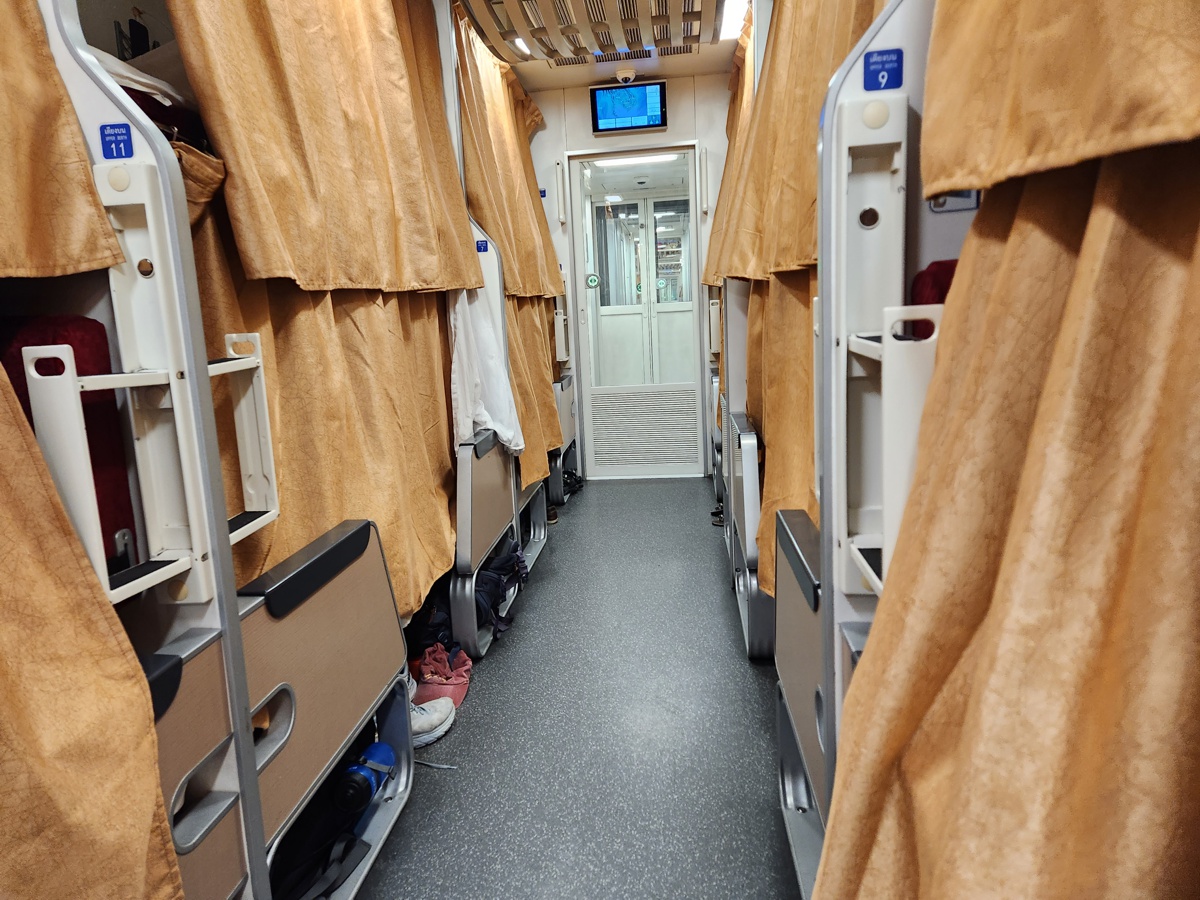
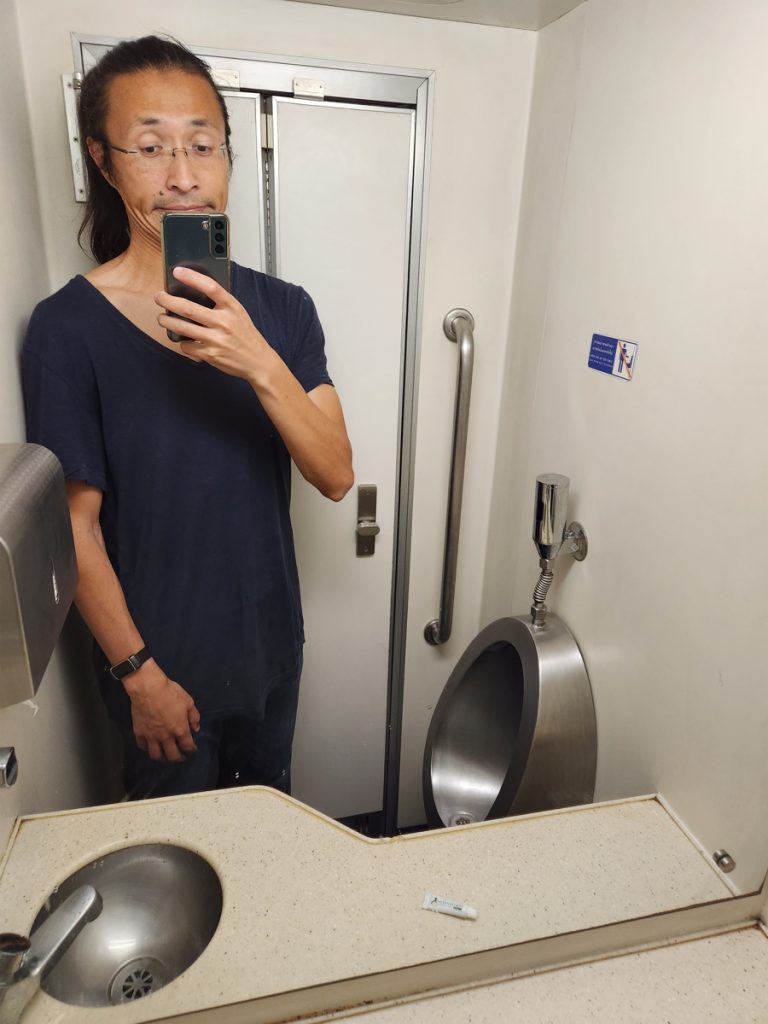
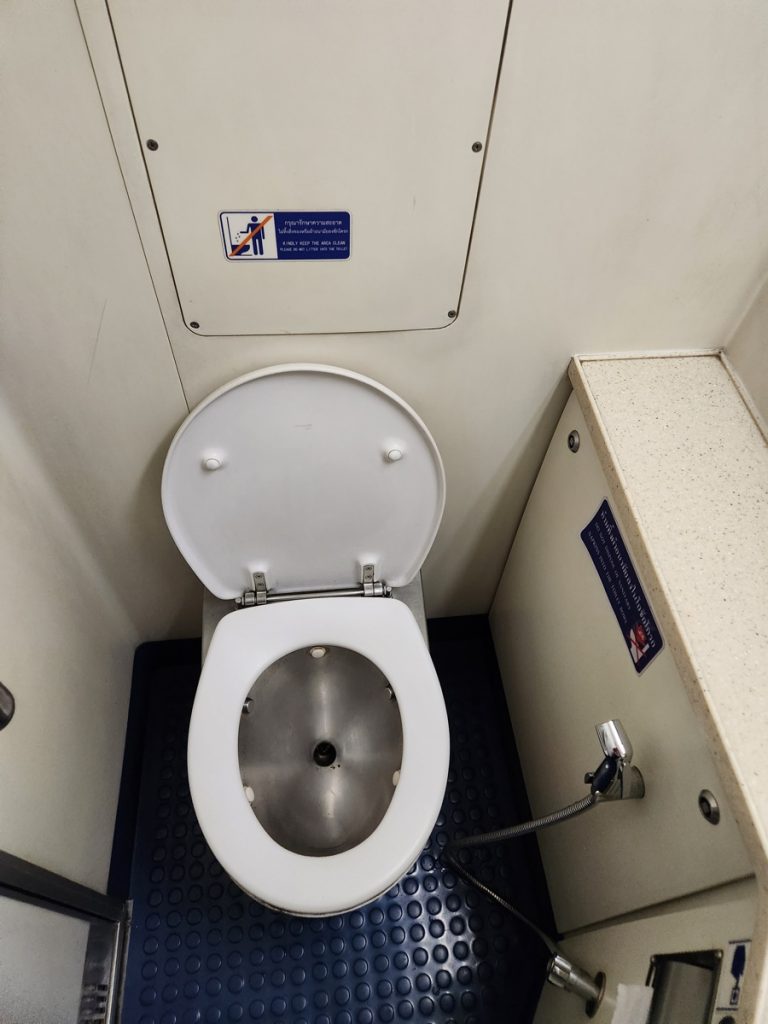
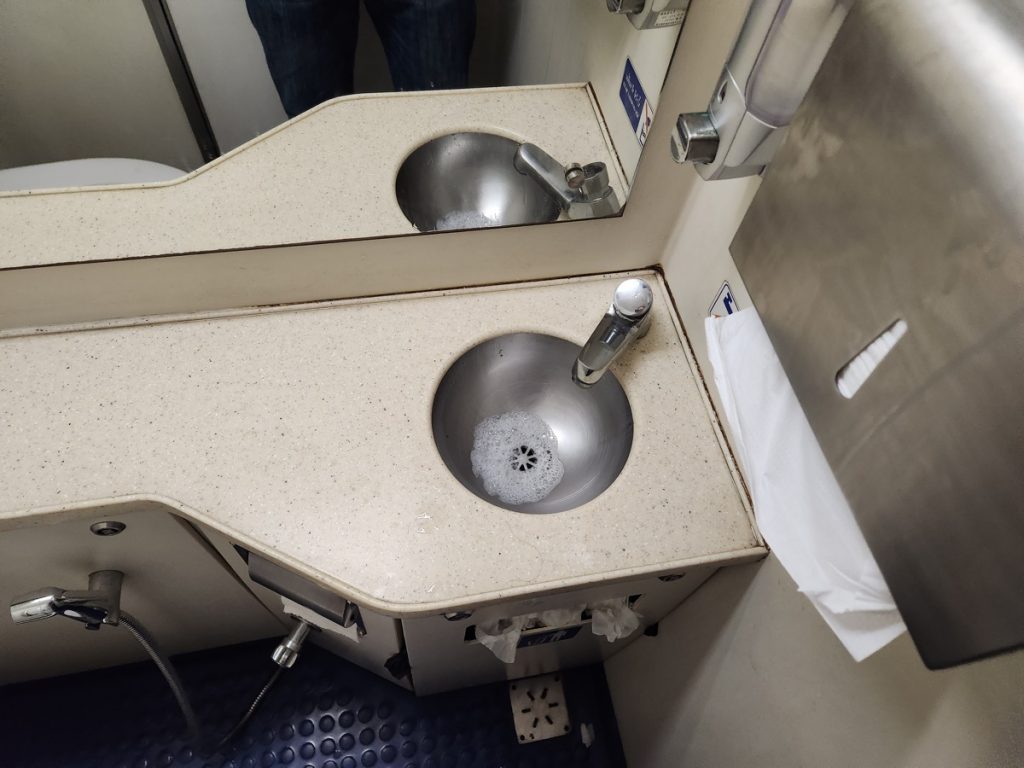
SEA 2023 (13/17) – Notable Eats in Thailand – Peter's Blog
August 20, 2023 at 3:21 am[…] Overnight Train to Chiang Mai […]
SEA 2023 (10/17) – Chiang Mai: Elephants!!! – Peter's Blog
August 20, 2023 at 3:23 am[…] Overnight Train to Chiang Mai […]
SEA 2023 (14/17) – Singapore: Itinerary – Peter's Blog
August 21, 2023 at 11:41 pm[…] Overnight Train to Chiang Mai […]
SEA 2023 (15/17) – Singapore: Deja Vu – Peter's Blog
August 21, 2023 at 11:49 pm[…] Overnight Train to Chiang Mai […]
SEA 2023 (17/17) – Notable Eats in Singapore – Peter's Blog
August 22, 2023 at 1:02 am[…] Overnight Train to Chiang Mai […]